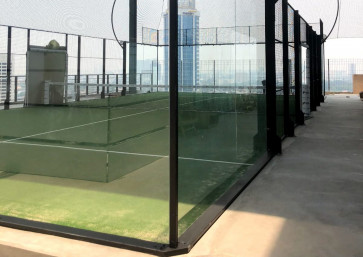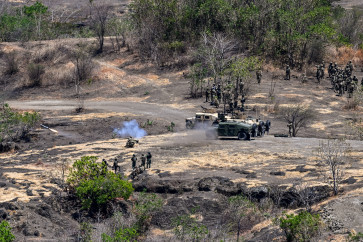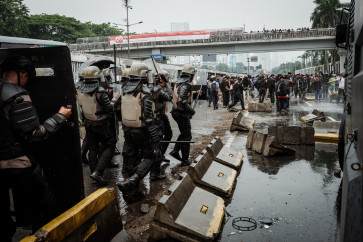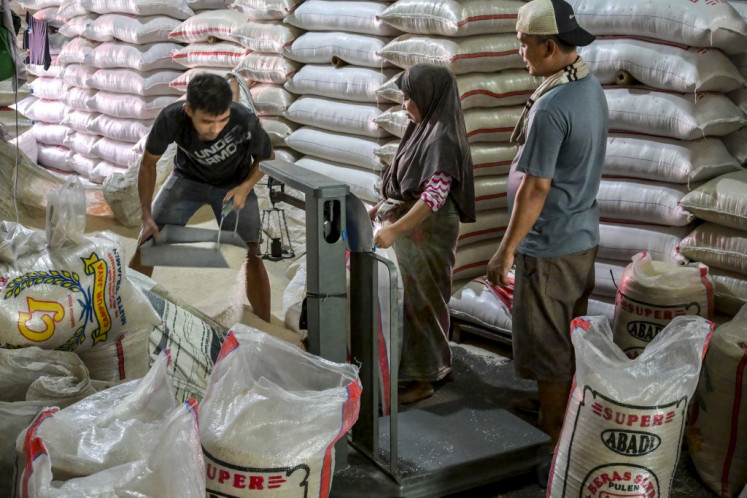Popular Reads
Top Results
Can't find what you're looking for?
View all search resultsPopular Reads
Top Results
Can't find what you're looking for?
View all search resultsBantar Gebang, the landfill of survival
A life at risk: Scavengers look for sellable trash while two backhoes move waste at Bantar Gebang landfi ll in Bekasi, West Java
Change text size
Gift Premium Articles
to Anyone
A
span class="caption">A life at risk: Scavengers look for sellable trash while two backhoes move waste at Bantar Gebang landfi ll in Bekasi, West Java. Working at the dumpsite can be dangerous as scavengers face the risk of being hit by backhoes and buried under trash avalanches.(JP/Riza Roidila Mufti)
A huge pile of trash, standing more than 30 meters high, towered over the landfill. Plastic bottles, leftover food, paper, glass, needles — all kinds of trash — were scattered everywhere. The vile stench of rotten food and human waste filled the air. Thousands of flies buzzed around constantly, swarming all over the place. This is the everyday situation at Bantar Gebang landfill in Bekasi, West java, which has been receiving and accommodating garbage from Greater Jakarta since 1989.
It was a late, cloudy Friday afternoon, yet scavengers were still out hunting for waste that they could turn into money. Equipped with only boots, gancho (a metal hook), basket, but without gloves, they moved from one spot to the other. Next to them, five backhoes moved garbage from the bottom to the top of the landfill.
The scavengers of Bantar Gebang landfill fully realize that their work is dangerous. Garbage avalanches, excavators, potentially dangerous objects such as broken glass and used hospital needles and diseases are just some of the threats they face.
For Darka, a fatal incident in 1993 traumatized him from working on Fridays. He was struck by an excavator from behind while he was searching for trash.
“My lower back was struck by an excavator’s bucket. I was seriously injured. I could not do anything, so I just lay in bed for nine months,” said Darka, who has been scavenging for garbage since 1989.
“The doctor who looked after me said that I would either die or live with a disability because of the injury,” the 62-year-old added, while revealing the long scar along his lower back.
In 1996, however, he decided to go back to the landfill and started to scavenge again due to limited job opportunities. But he made up his mind that he would either stop scavenging on Fridays or go home earlier on those days.
“I decided not to go to the landfill on Fridays as many accidents occur that day. After all, it is going to rain soon too, so it is dangerous and risky to be there,” he said while sitting on the wooden chair in front of his shelter.
Darka is not the only scavenger who has experienced an accident at Bantar Gebang landfill. Early last year, a scavenger died after he was buried by a pile of garbage that had been released from a garbage truck. In early 2016, a scavenger died because of a garbage avalanche.
Lalan, 38, is a former scavenger who survived a garbage avalanche a few years ago.
“Before the avalanche happened, the area was impacted by an earthquake that hit some parts of the country. Not long after that, the mountain of garbage moved slowly downwards. I moved to escape from the garbage avalanche, but I fell in a garbage hole filled with water. Fortunately, I survived by swimming out of it,” he recalled.
Wahyudi, 24, has been scavenging since he was 7 years old and remembers the day he lost his friend in the landfill.
“Two of my friends, who were the same age as me, died at the landfill. It was so sad because one of them had died after being hit by a backhoe. The other was [buried] by a garbage avalanche,” he said.
Karyadi, 48, displayed a more optimistic attitude, suggesting that working in the landfill was about survival and had taught him to grow stronger every day.
“If we are not skillful enough on the field and are terribly afraid looking for sellable waste, we will not get anything,” said Karyadi, who claimed to earn up to Rp 100,000 (US$7) daily.
He said he had been injured several times after accidentally stepping on broken glass, used satay sticks and even used hypodermic needles.
“The last accident was the one that hurt me the most as my foot was badly swollen for several days due to the infected needle, but I survived,” he added.
Even though accidents at Bantar Gebang landfill threaten the life of scavengers, the dumpsite is never empty. The limited job opportunities elsewhere force them to return to the “waste mining” site.
It is with the scavengers’ hands that mixed garbage is sorted. They help separate inorganic waste such as plastic bottles from organic waste, such as leftover food.
Despite all the risks that come with being a scavenger, the presence of scavengers at the landfill has a big role in helping recycle and manage the waste of Jakarta and its satellite cities.










